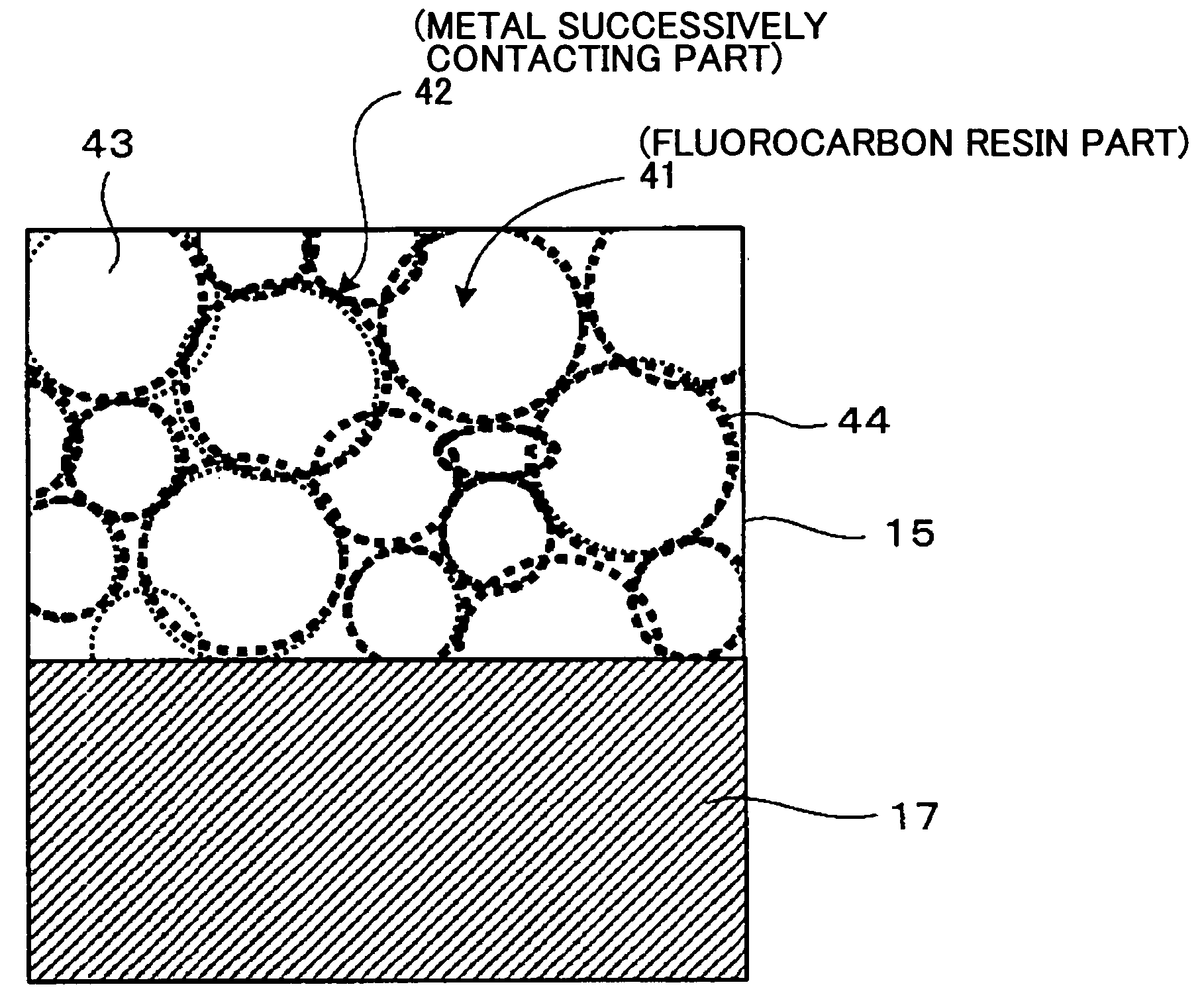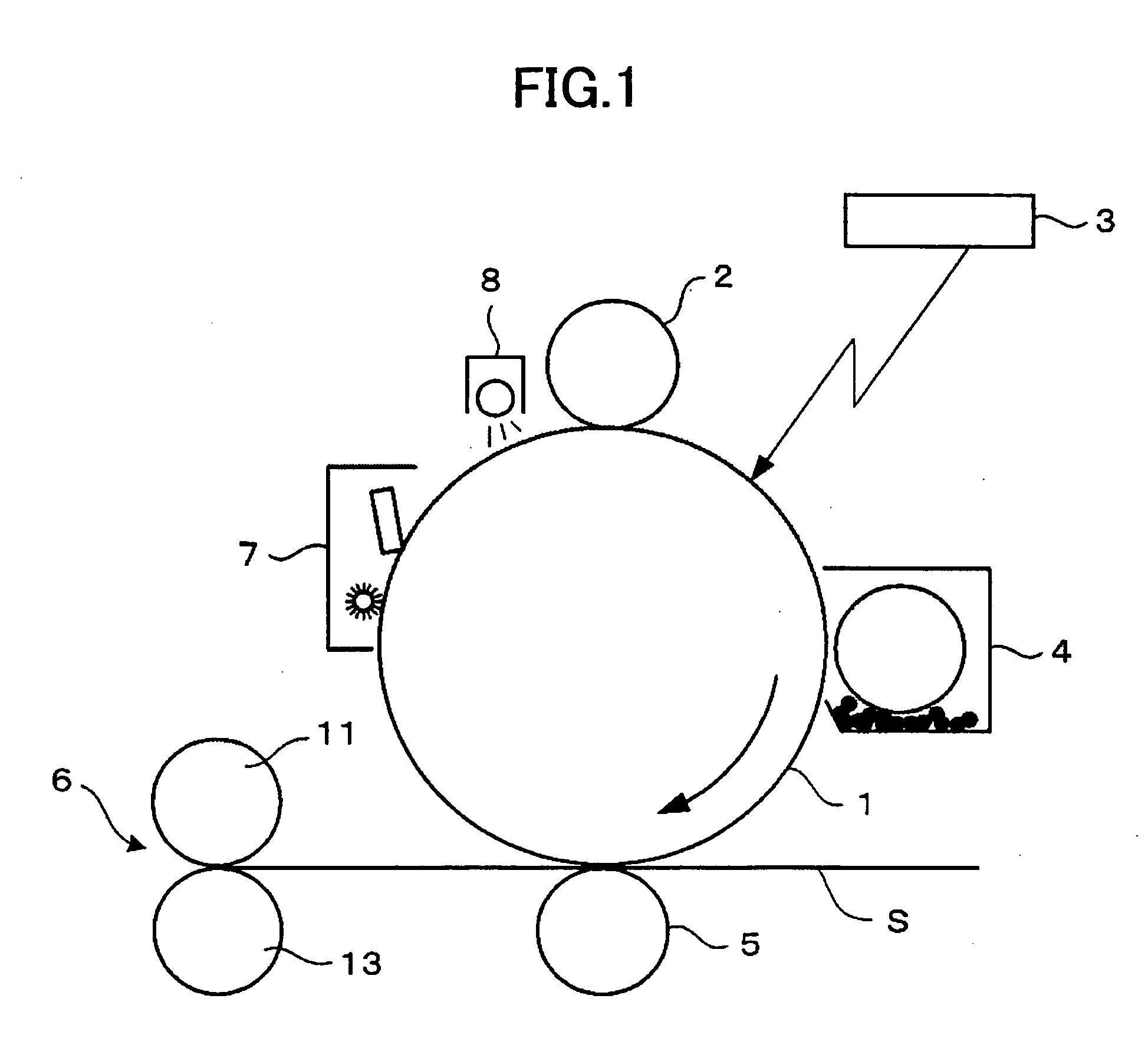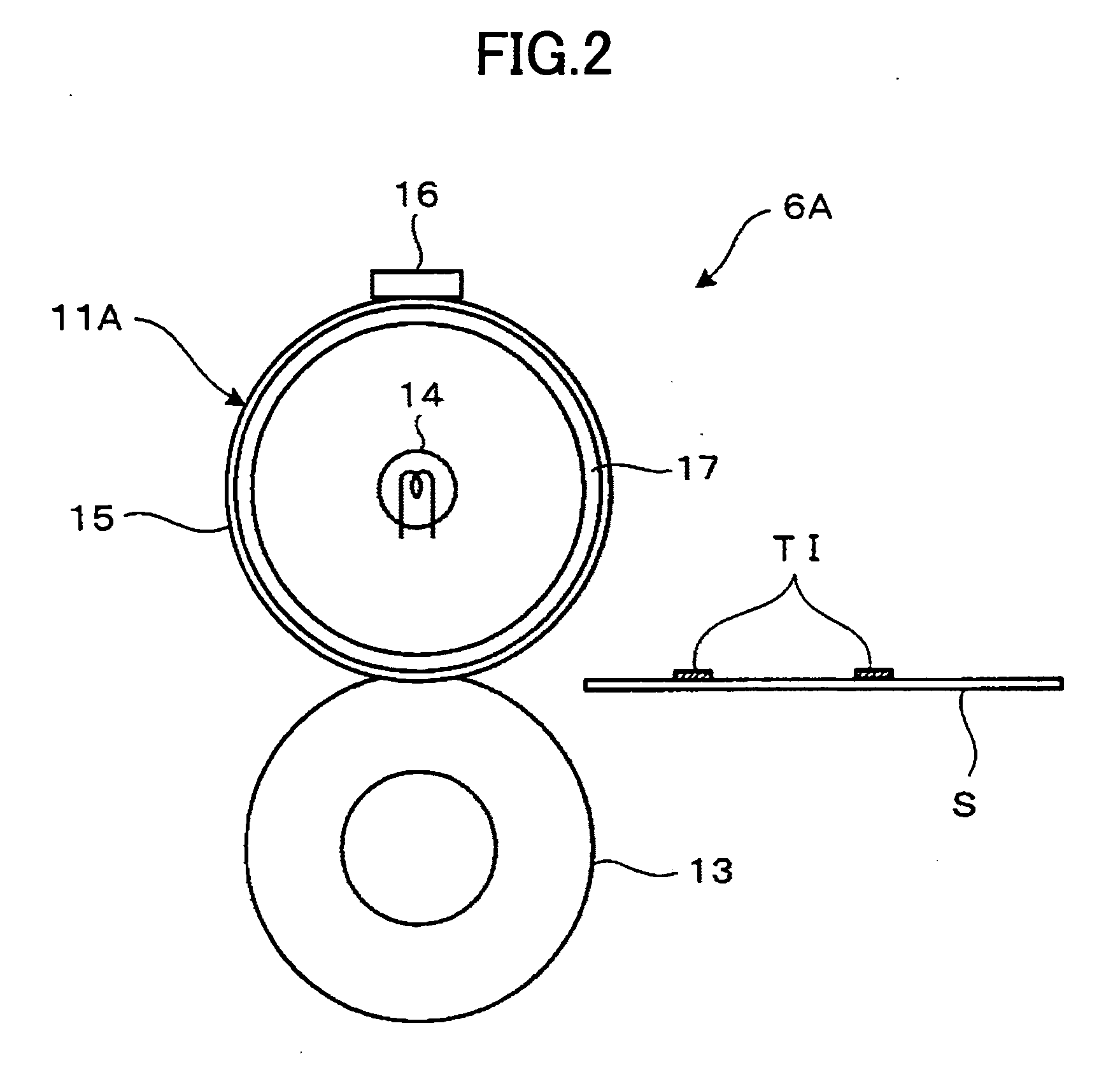Heating member, heating member surface layer producing method, fixing member, heating device, fixing method, fixing device and image forming apparatus
a heating member and surface layer technology, applied in the direction of instruments, electrographic processes, synthetic resin layered products, etc., can solve the problems of insufficient releasability of fixing roller surfaces, image may be stained, and thermal conductive efficiency degradation, so as to improve the releasability of toner, reduce the cost of toner, and reduce the cost of production
- Summary
- Abstract
- Description
- Claims
- Application Information
AI Technical Summary
Benefits of technology
Problems solved by technology
Method used
Image
Examples
embodiment 1
[0484] First, embodiments of the heating member (fixing member) 11A having the surface layer 15 having a configuration shown in FIGS. 6 and 7 used in the fixing device 6A configured as shown in FIG. 2 are described.
embodiment 1-1
[0485] As a component of the surface layer, Ni powder (average particle diameter: 1.2 μm) was mixed into PFA powder (MP102 (made by DuPont-Mitsui Fluorochemicals Co., Ltd.), average particle diameterφ: 20 μm) in an amount such that Ni is 10% in reduced volume, the thus-obtained one was input to a hybridization system configured as shown in FIG. 8 made by Nara Machinery, and Ni powder was fixed on PFA powder. A state in which Ni almost covered PFA powder was confirmed from observation by means of a scanning electron microscope (SEM). This powder was mixed with PFA powder (MP102 (DuPont-Mitsui Fluorochemicals Co., Ltd.), average particle diameter φ: 20 μm), was coated on an aluminum substrate in an electrostatic manner, burning was carried out at 380° C., resin was melted and then cooled, the coating was pealed from the substrate, and a sample was produced. Thus, a sheet having a thickness of 100 μm was produced, and thermal diffusivity was measured according to a laser flash method. ...
embodiment 1-2
[0486] The same as the embodiment 1-1, as a component of the surface layer, Ni powder (average particle diameter: 1.2 μm) was mixed into PFA powder (MP102 (made by DuPont-Mitsui Fluorochemicals Co., Ltd.), average particle diameterφ: 20 μm) in an amount such that Ni is 10% in reduced volume, the thus-obtained one was input to a hybridization system configured as shown in FIG. 8 made by Nara Machinery, and Ni powder was fixed on PFA powder. Then, mixing was carried out according to a ratio of Table 3 below, coating was carried out on an aluminum tube to be the core metal (base material) 17 of the fixing roller in an electrostatic manner, the coated resin was melted at 380° C. and then cooled, grinding was carried out by means of corundum particles, thus one on which surface roughness was made equal to or less than 2 μm in ten-point average roughness (Rz) was produced, and thus, the fixing roller 11A was produced. A final thickness of the surface layer is 40 μm. This roller was loaded...
PUM
| Property | Measurement | Unit |
|---|---|---|
| contact angle | aaaaa | aaaaa |
| thickness | aaaaa | aaaaa |
| width | aaaaa | aaaaa |
Abstract
Description
Claims
Application Information
 Login to View More
Login to View More - R&D
- Intellectual Property
- Life Sciences
- Materials
- Tech Scout
- Unparalleled Data Quality
- Higher Quality Content
- 60% Fewer Hallucinations
Browse by: Latest US Patents, China's latest patents, Technical Efficacy Thesaurus, Application Domain, Technology Topic, Popular Technical Reports.
© 2025 PatSnap. All rights reserved.Legal|Privacy policy|Modern Slavery Act Transparency Statement|Sitemap|About US| Contact US: help@patsnap.com



